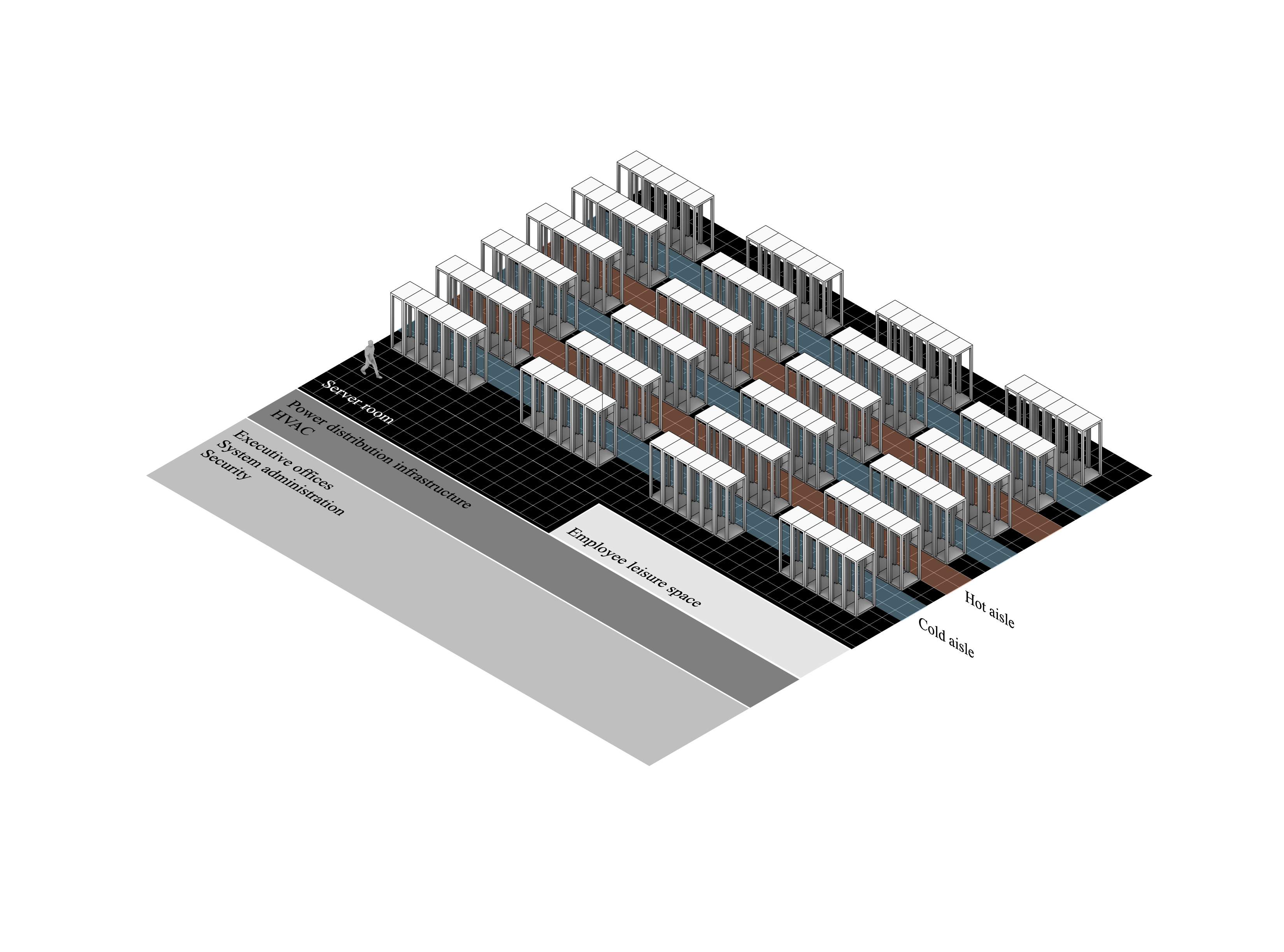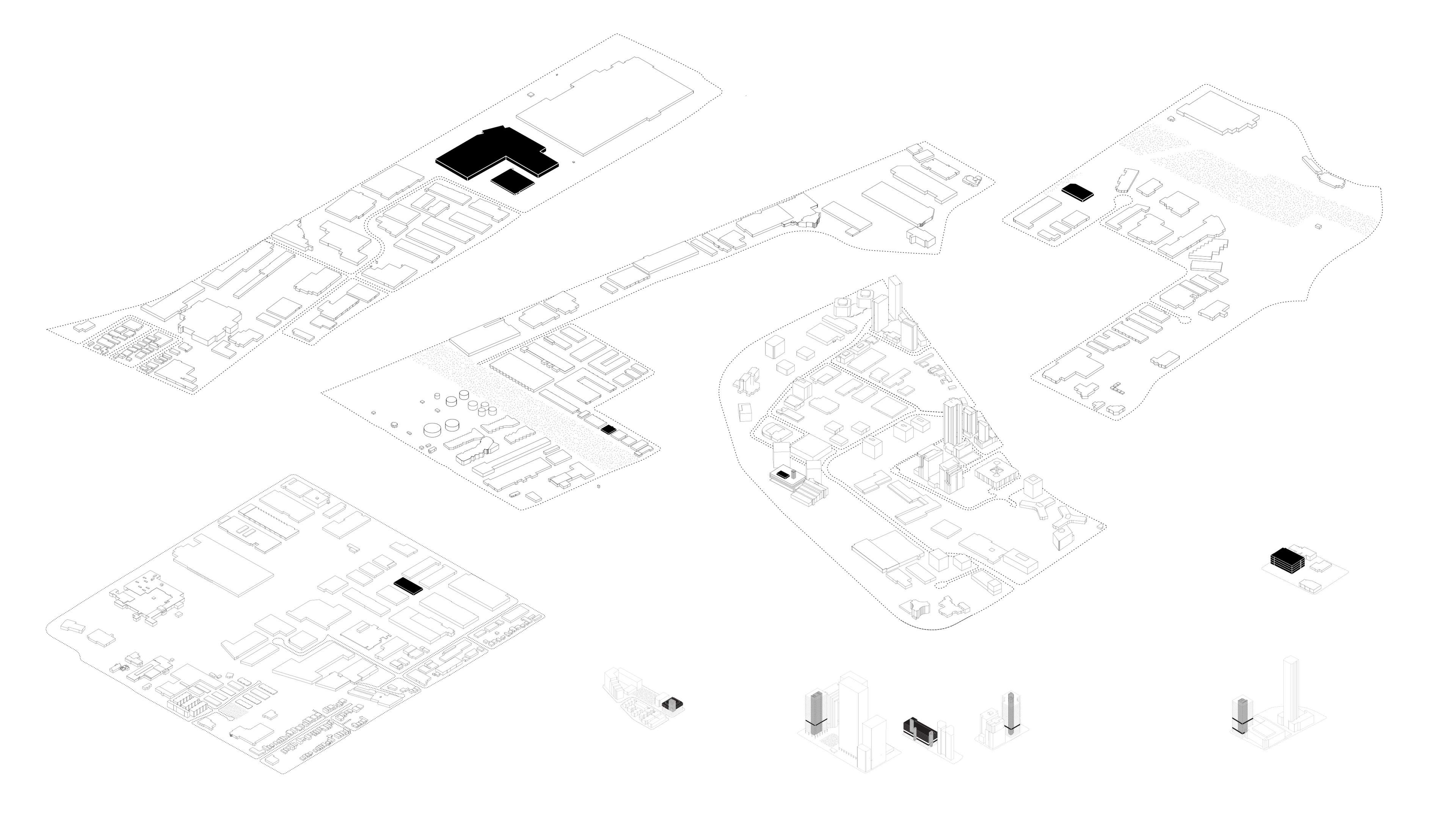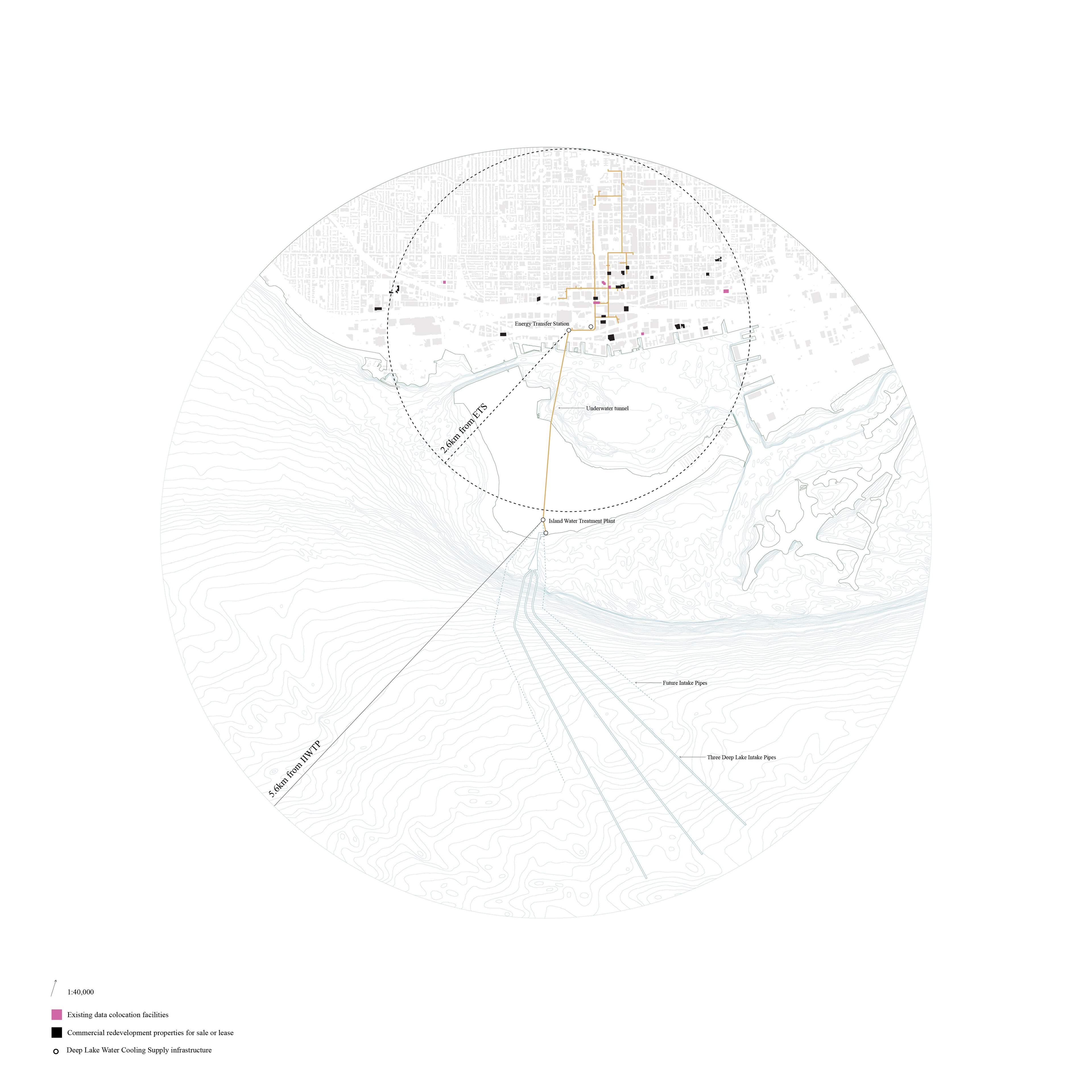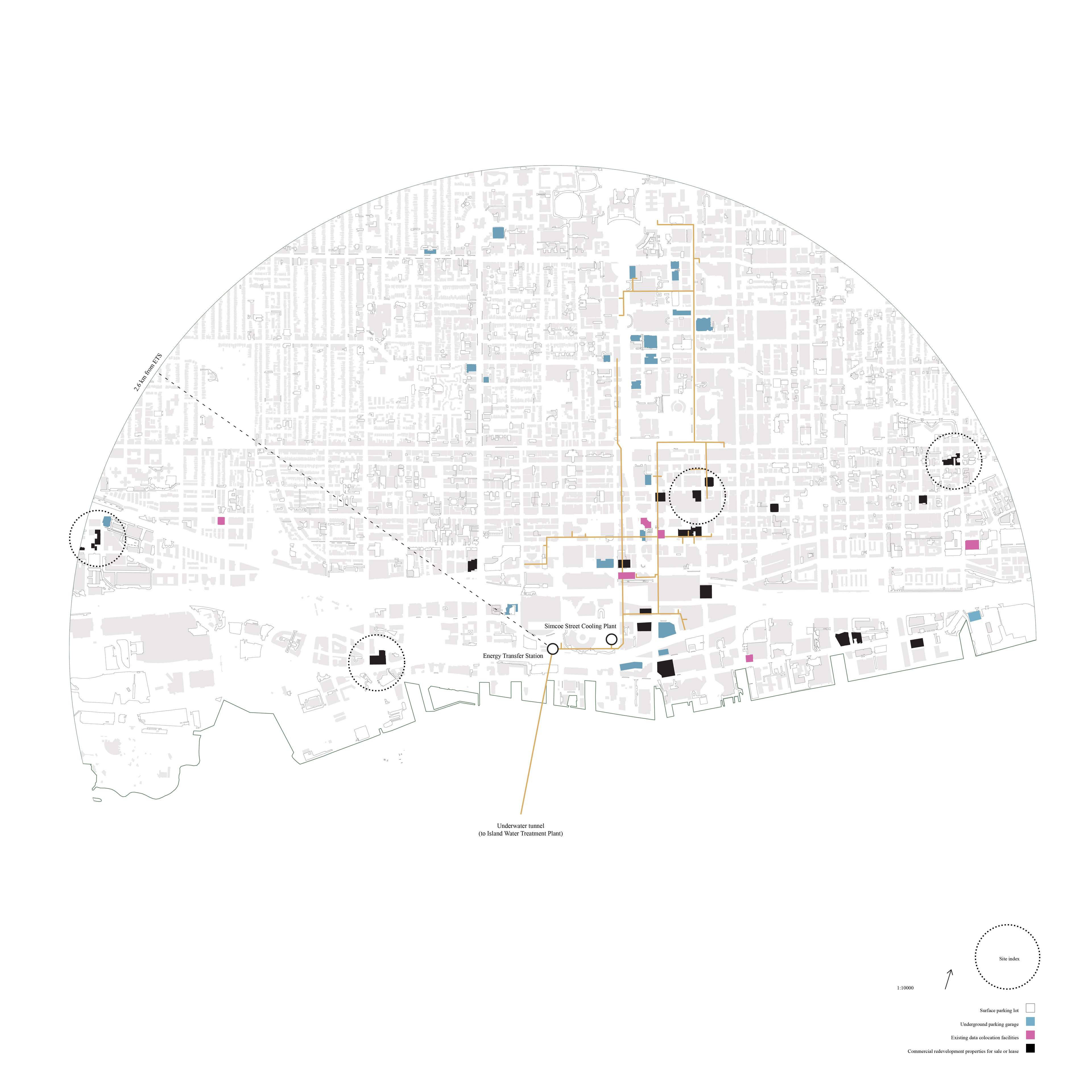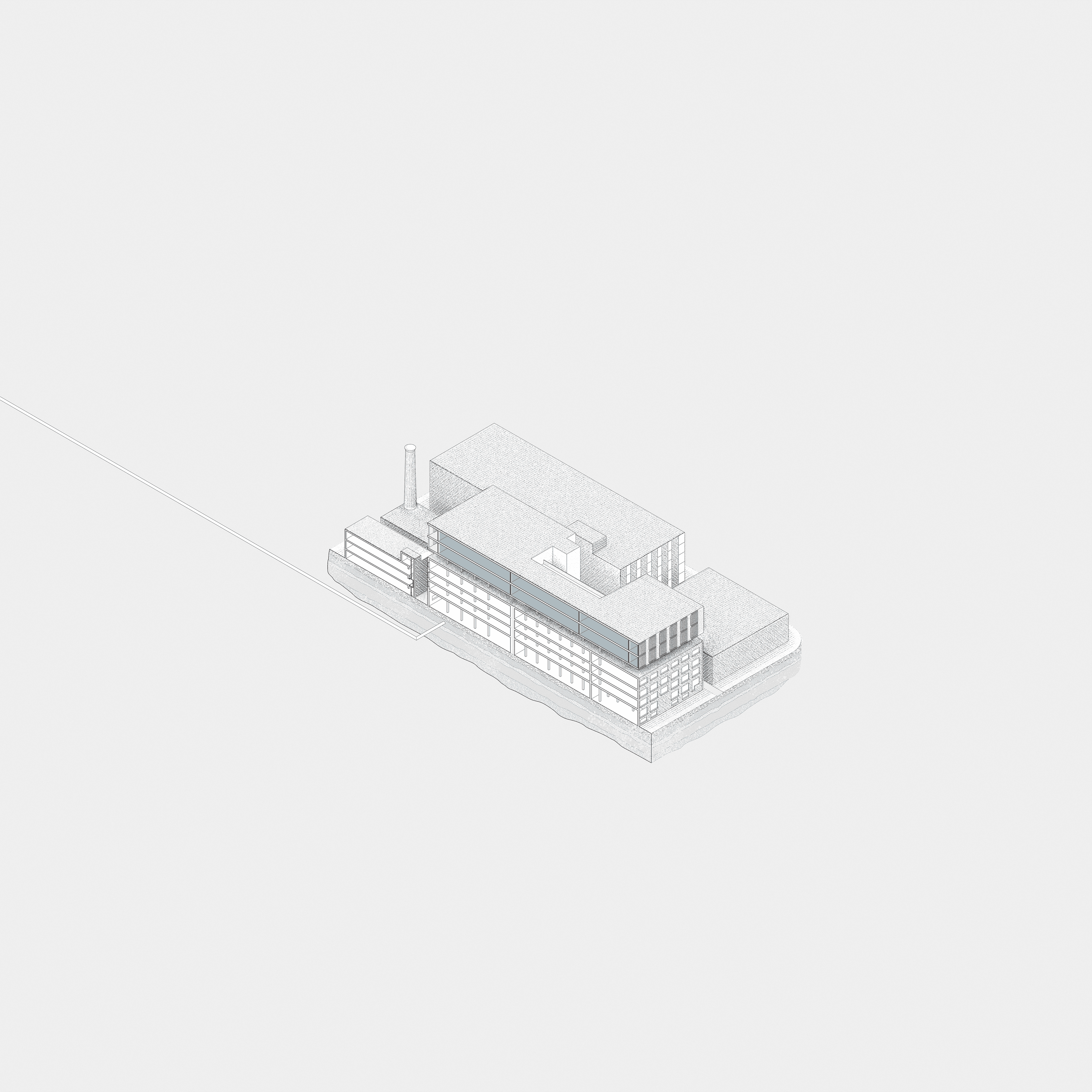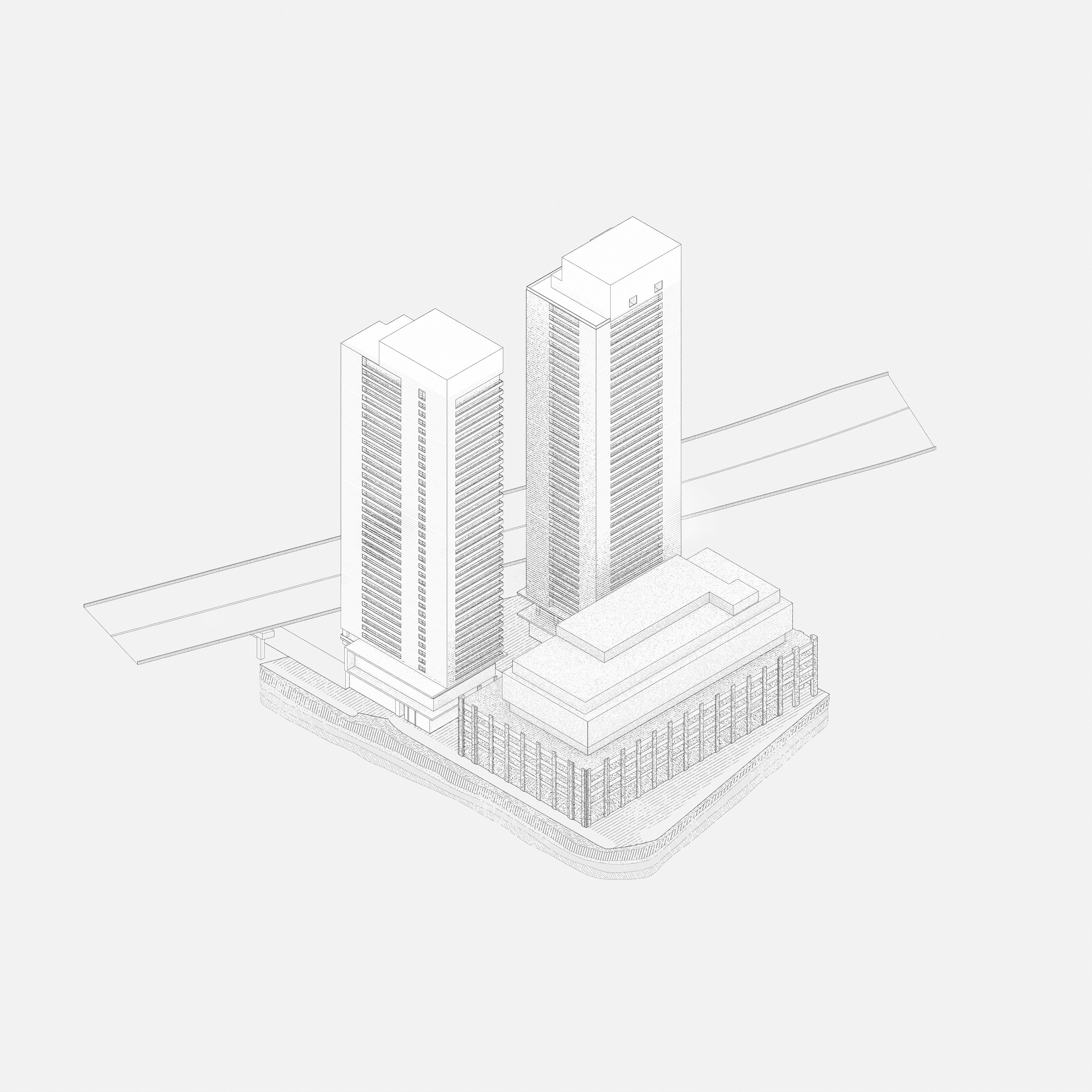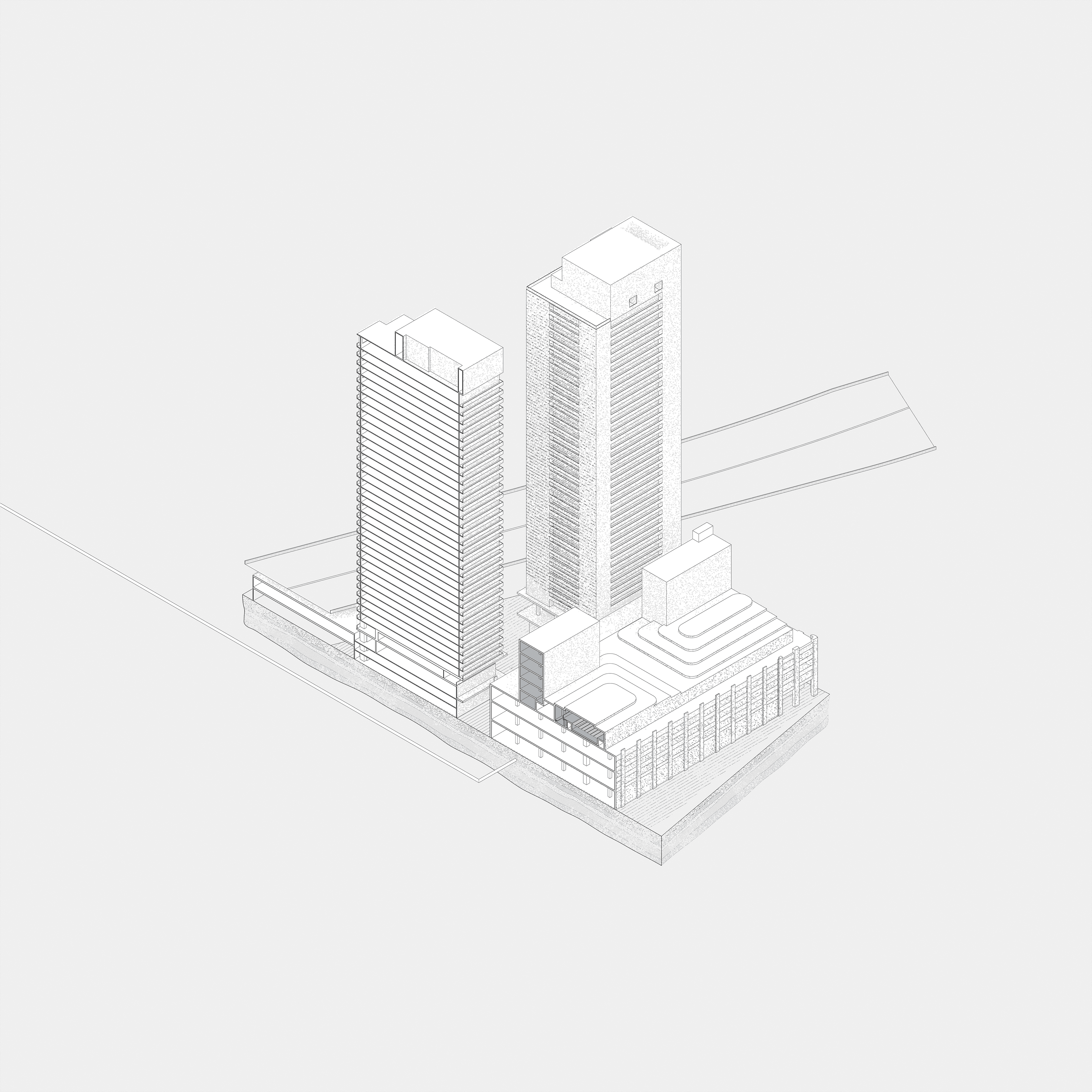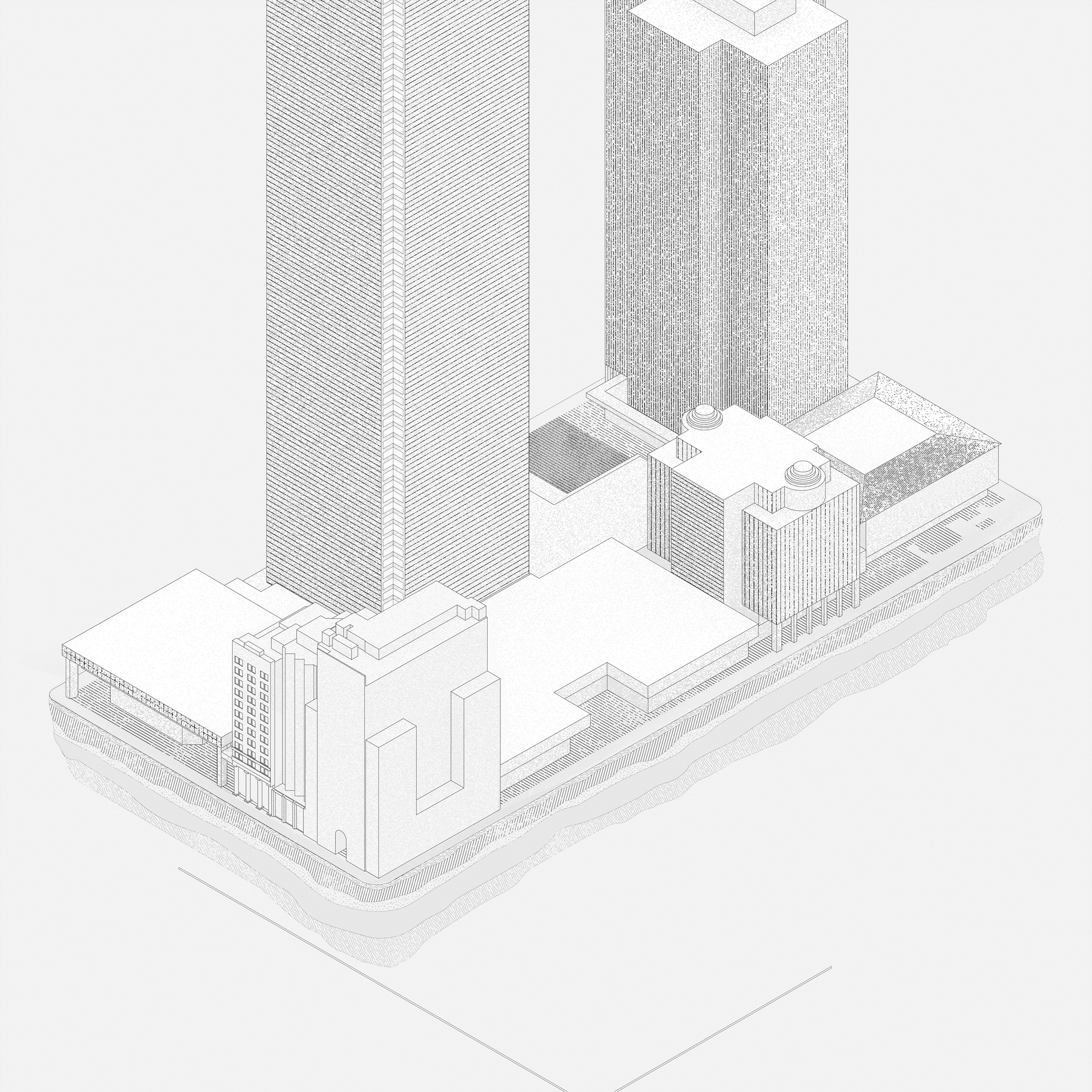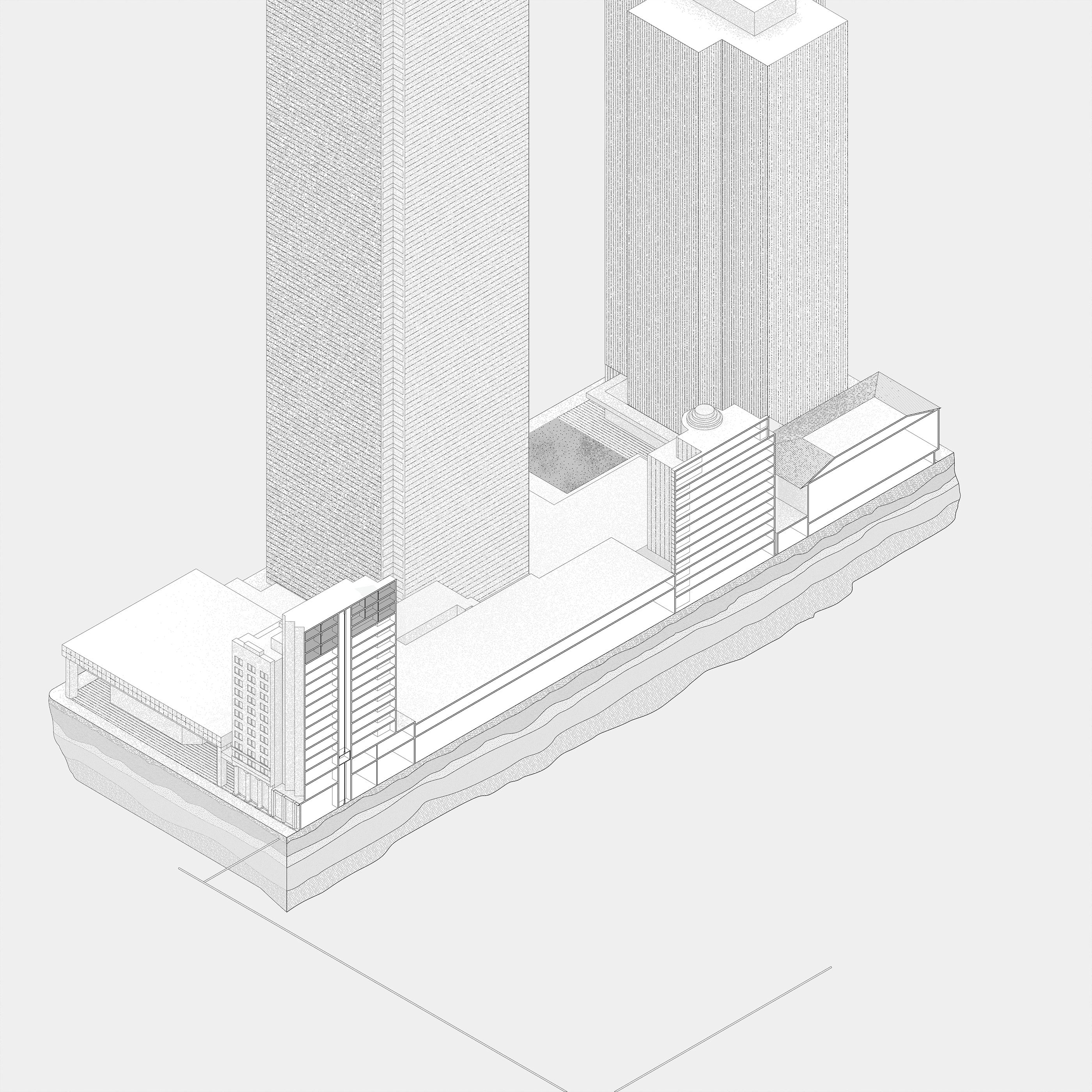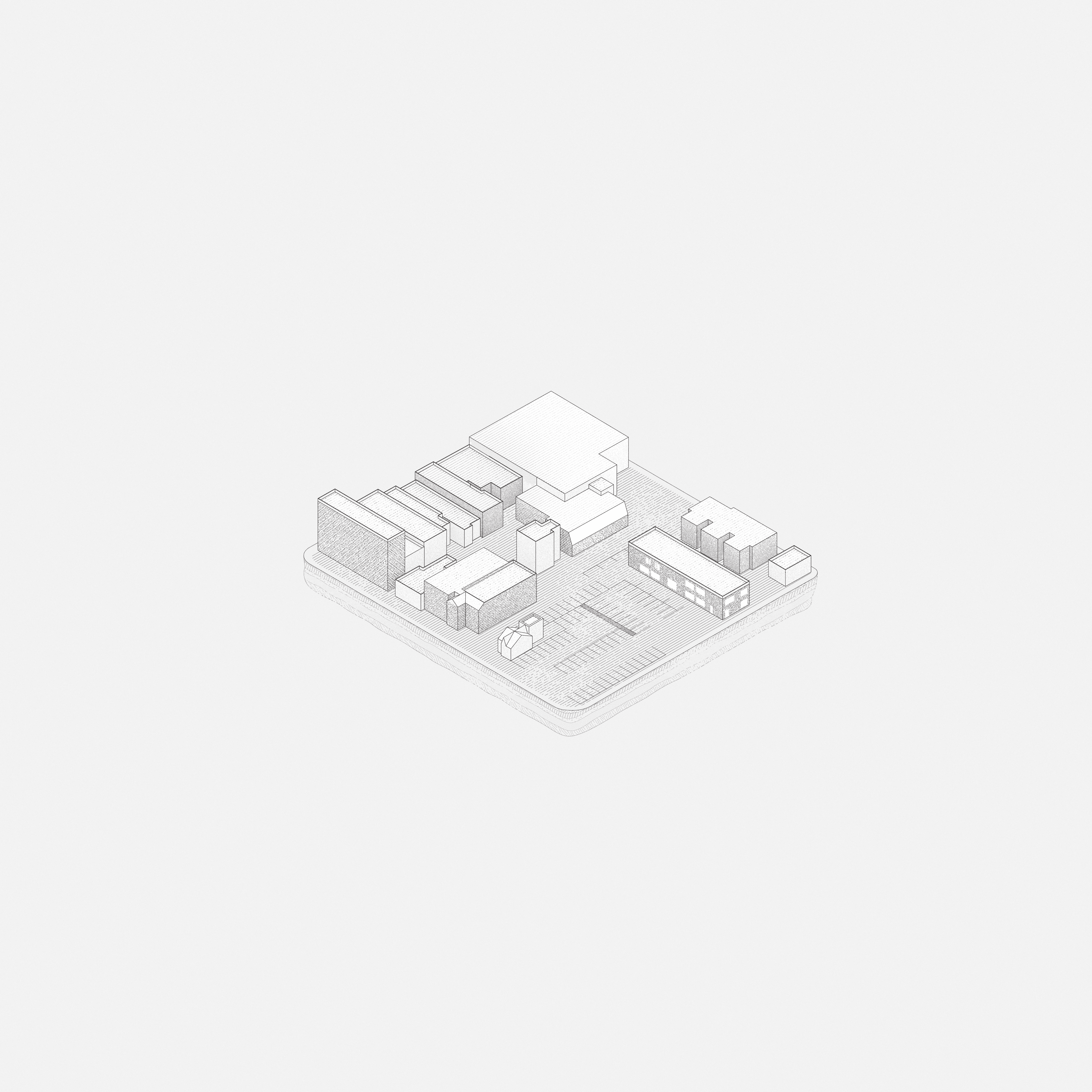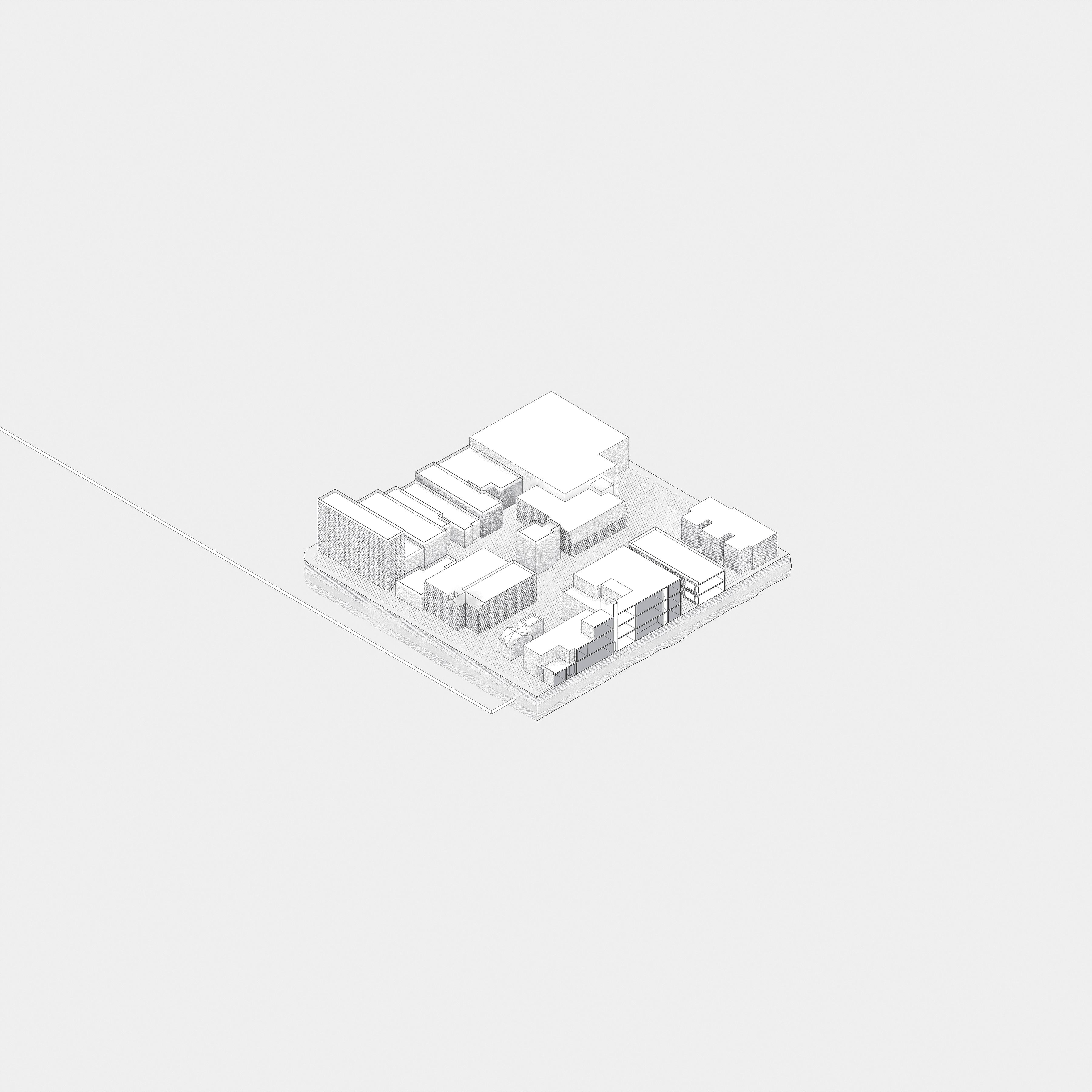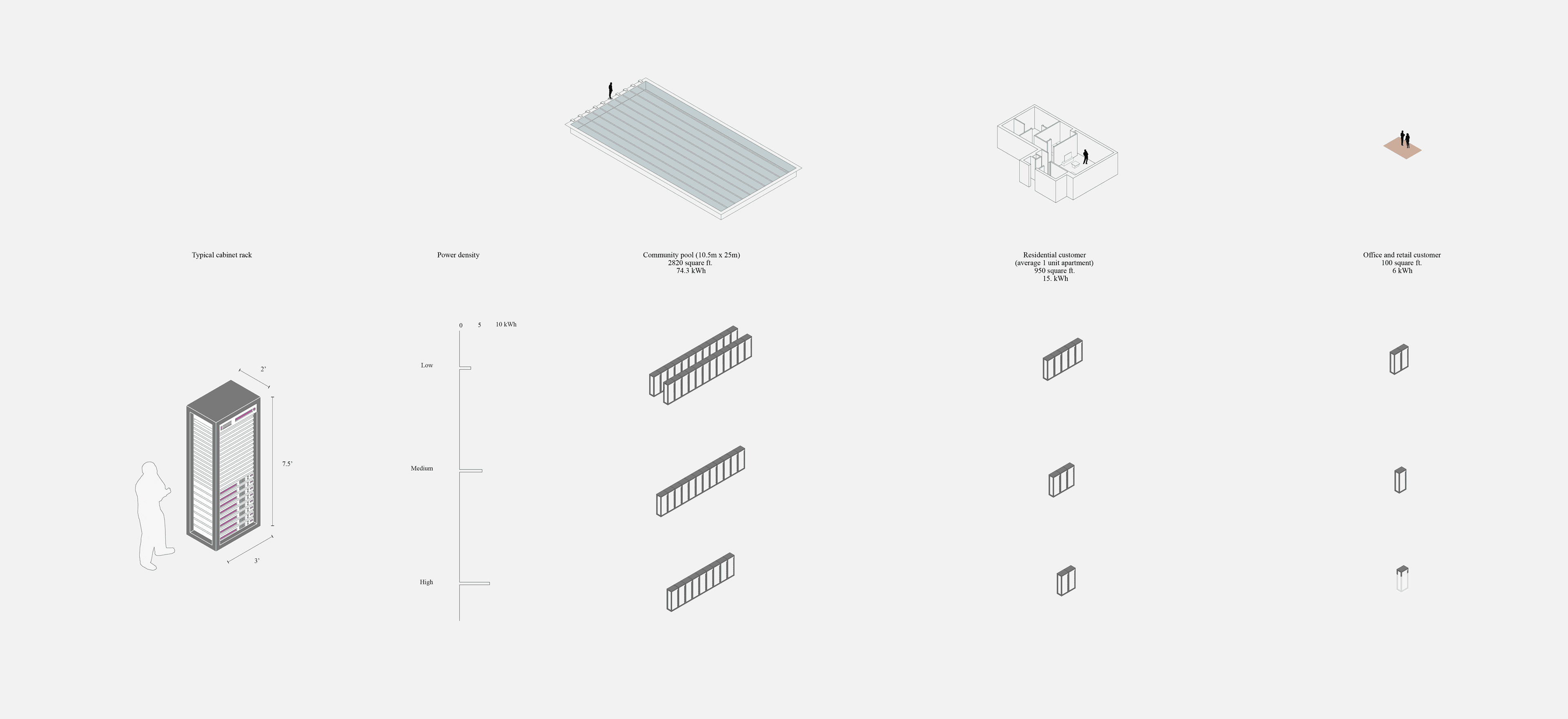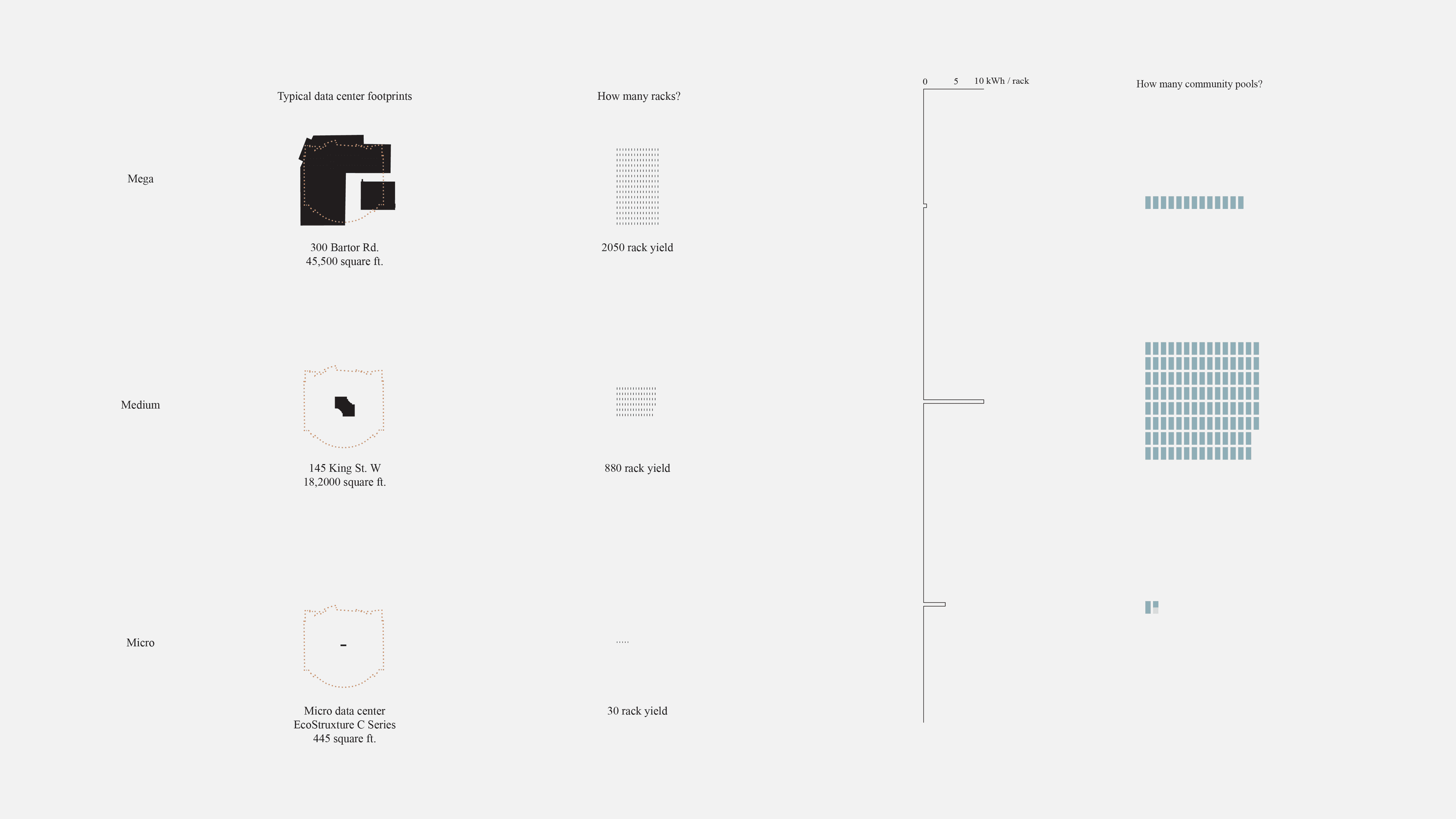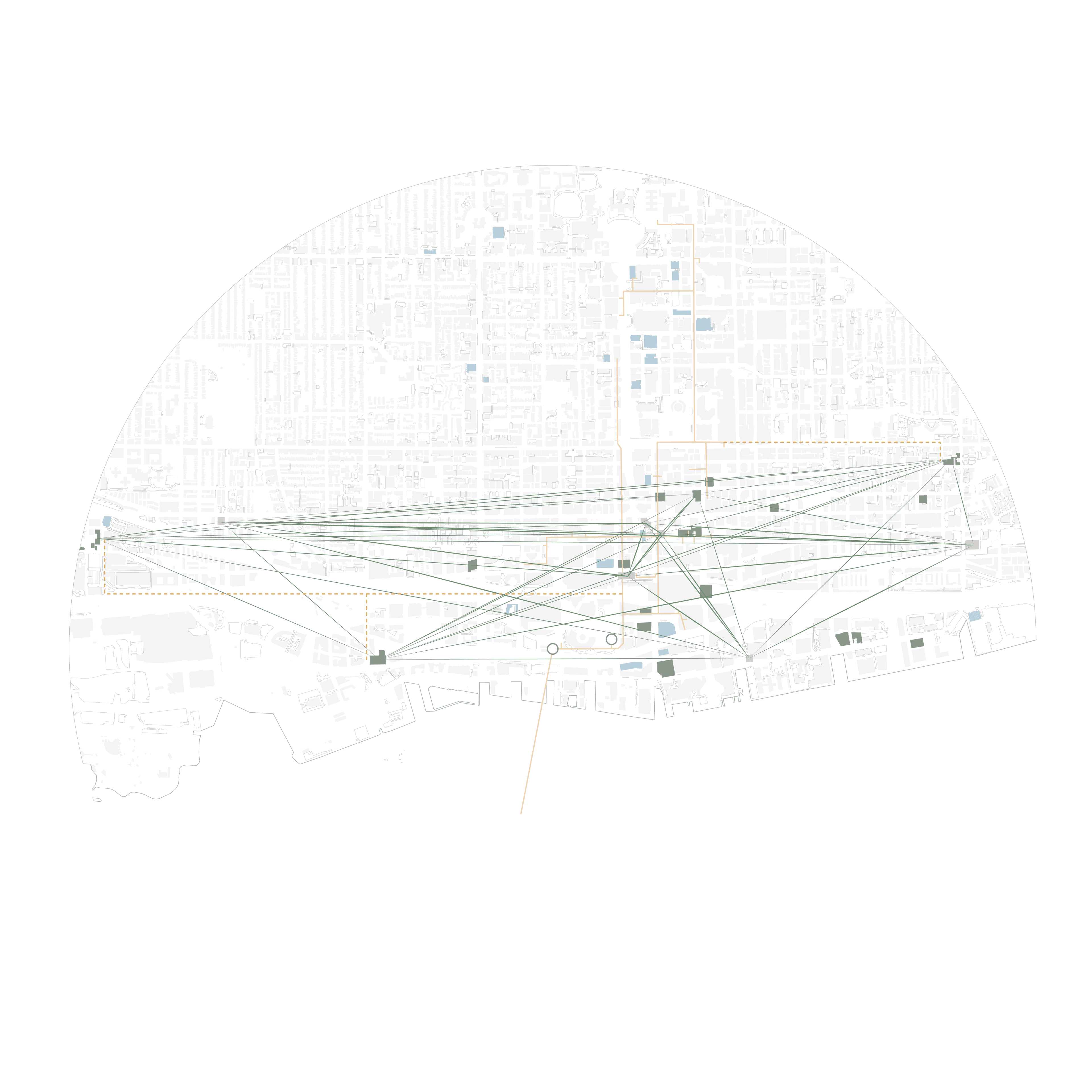A series of hybrid, and sometimes parasitical, architectural interventions that translate waste heat from data centers into energy used to power adjacent urban amenities.
Today, data doesn’t exist ‘somewhere else,’ but physically right next to us due to data distribution trends such as edge networking. No longer routed through gargantuan, placeless data centres, data is growing smaller and closer. Yet the physical forms data assumes remain post-human and utilitarian.
Rather than leaving these data colocation facilities to stand inaccessible and foreign in the cityscape while generating excess heat and power, the data center can be integrated in ways that reuse its energy for urban amenities. Human-generated data can generate human engagement in turn, and this research produced a series of sub-types that explore different ways this symbiotic relationship between data storage and end-users can be schematically implemented.
Is the shift in data’s proximity and scale an opportunity for the form of data storage to engage its immediate physical, social, and cultural circumstances? Could human-generated data also instigate human engagement?
This thesis catalogs data-form sub-types that symbiotically provide connectivity back to end-users, through a range of programs like heritage preservation, community engagement, and housing.
Location | Toronto |
Project Type | Academic |
Date | 2022 |
The data center today exists as post-human architecture where the human scale is no longer the primary measure of space; it is designed to be hidden.
Though they hold digital images of billions of people’s lives, the places where we store our data do not defer to the human condition. Its interior can be scaled and expanded to any limit.
Toronto data center block study
This research began at the city block scale, focusing on sites that optimized the grid the same way a data center’s internal layout does. Looking at Toronto’s city blocks that host data centers, whether the data storage facilities are located inside single floors of office towers, or commercial/office buildings dedicated entirely to data storage facilities, or larger mega-data center warehouses splayed farther up north of Toronto.
There is a relationship of scale the farther out from the downtown core one goes - and water cooling from the lake - that takes place. More surface area is covered by these
Enwave Deep Lake Water Cooling System, 2022
The sites were determined by a radius within which Toronto’s Deep Lake Water Cooling infrastructure cools buildings in the downtown core, because the cooling process can be a measure put into place to lessen the strain on edge data centers that can hybridize into the city, and provide a larger cooling network for edge networking in the future.
From that radius, commercial redevelopment properties for sale or lease were identified, and overlaid with areas that had surface parking lots or underground parking, so that the hybrid data center sub-type brought onto that site can be expandable into the future.
Four sites were identified based on these criteria: a mid-rise retail block on a heritage site, a high rise residential block with retail, a high-rise office block with retail, and a low-rise office block adjacent to housing. Each site provided a different re-developable area to work with.
99 Atlantic Avenue, before data-form reboot. Heritage block.
99 Atlantic Avenue, after data-form reboot. Heritage block with office buildings and data “crown”
500 Lakeshore Blvd E, before data-form reboot. Office space above heritage retail plinth
500 Lakeshore Blvd E, after data-form reboot. Community center, office space, and data “towers” above heritage retail plinth
320 Bay St, before data-form reboot. Office spaces on upper floors of The Permanent.
320 Bay St, after data-form reboot. Infill boutique hotel and data center “core” on upper floors of The Permanent.
500 Richmond St W, before data-form reboot. Parking lot adjacent to rooming house and low-rise retail.
500 Richmond St W, after data-form reboot. Multi-unit residential housing and office space hybrid with data “core”.

